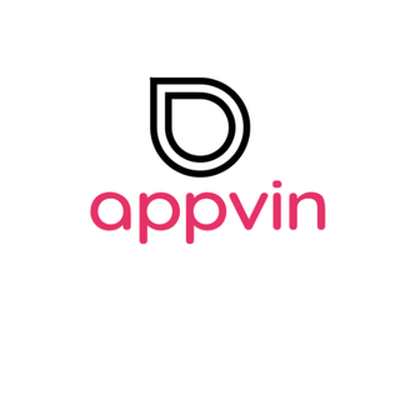Every business, whether a startup or an established company, now needs a mobile app. You just cannot afford to overlook its advantages as a business owner.The corporate environment has seen tremendous transformation in recent years. To begin and complete business with clients, businesses today heavily rely on technology.
The way people purchase and meet their needs is always changing, and modern technology is a crucial part of this transformation. As technology develops at an increasing rate, consumer expectations are also increasing. Mobile apps have developed into an excellent platform for fulfilling such customer expectations.

AppVin Tech is here to meet all of your needs. If you’re considering developing a mobile app or improving an existing one, you need a well-structured plan to ensure success.
In this blog post, we will explore seven crucial steps to guide you through the process of developing a mobile application.
1. Define Your Goals
The first and most important step in mobile app development is defining your goals. With your app, what do you want to accomplish? Clearly defining your objectives is essential because they will shape your entire development process. Ensure that your goals are measurable, as this will help you gauge your app’s success.
For example, if you’re creating an e-commerce app, your goal might be to reduce shopping cart abandonment rates on mobile devices. Establish key performance indicators (KPIs) to measure and track your progress.
2. Research Your Target Market
Before diving into development, it’s crucial to thoroughly research your target market. Understanding consumer behaviours, market dynamics, and user preferences will provide valuable insights into creating a successful app. Study user reviews of top apps in your niche to identify areas for improvement.
Furthermore, gaining insights into your target audience’s demographics, location, and device usage patterns is essential for tailoring your app to their needs.
3. Decide Your App Features
Identifying the right features to include in your app is a critical step. Focus on features that are necessary to provide value to your users and avoid overloading your app with unnecessary functionalities. Remember, simplicity can be a virtue in the early development stages, as it reduces costs and development time.
4. Choose Intuitive UI/UX Design
Your app’s user interface (UI) and user experience (UX) design are key factors in its success.A design that is both aesthetically pleasing and user-friendly can have a big impact. Ensure your app is intuitive, simple, engaging, and delivers on its promises. A well-designed UI/UX can enhance user satisfaction and increase conversion rates, as demonstrated by our success with Pizza Hut’s Middle-Eastern app.
5. Hire an App Development Company
Partnering with a reliable app development company can streamline the development process. Such companies typically offer a diverse team of professionals, including UI/UX designers, project managers, app developers, and market specialists. They bring expertise and the latest technologies to the table, ensuring that your app meets industry standards and user expectations.
6. Build a Minimum Viable Product (MVP)
Consider starting with an MVP — a simplified version of your app that introduces users to its core functionalities. This approach allows you to gauge user interest and gather feedback before investing heavily in advanced features. Many successful companies, such as Twitter, Dropbox, and Airbnb, began as MVPs.
7. Test, Launch, and Promote
Thoroughly test your app to ensure it performs flawlessly, offers a great user experience, and is free of bugs. Testing helps reduce development costs and time while improving your reputation as a service provider. Once your app passes testing, submit it to the relevant app stores, but ensure compliance with their guidelines and monetization strategies.
Post-launch, marketing your app is crucial to its success. Utilise informative and appealing videos to showcase your app’s core functionality. Leverage social media platforms to reach a global audience and highlight features that simplify users’ lives.
In conclusion, developing a mobile application requires careful planning and execution. By following these seven steps — defining your goals, researching your market, deciding on features, designing an intuitive UI/UX, hiring professionals, building an MVP, and thorough testing and promotion — you can increase your app’s chances of success. Stay tuned for our next blog post, where we’ll explore different types of app development for your business.
Click Here for App Development Services.






Comments